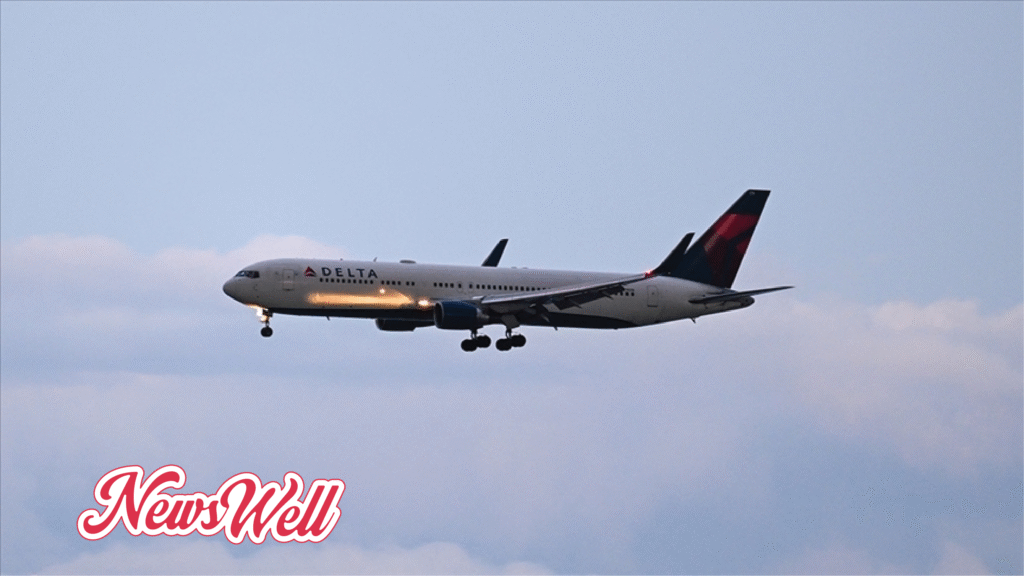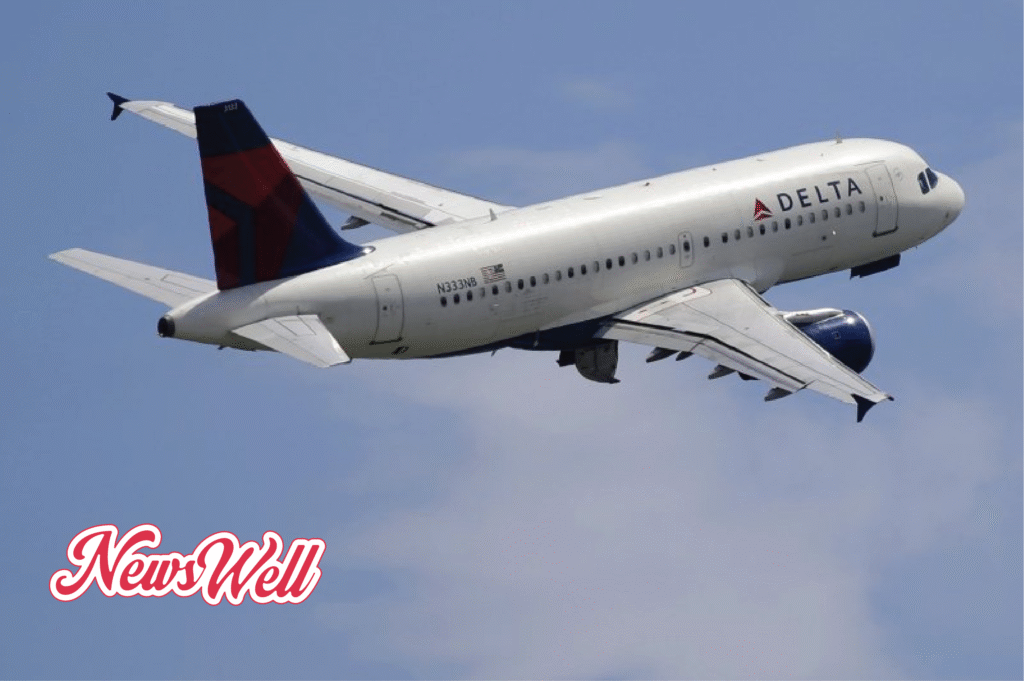What began as a routine Delta Flight DL275 from Detroit to Tokyo turned into a high-stakes drama on May 28, 2025. Hours into the journey, the Airbus A350-900 made an unexpected turn over the North Pacific, diverting not to a nearby airfield but to Los Angeles. The airline’s simple explanation of a technical issue masks a more complex reality. The full story of why the Delta Flight DL275 Diverted LAX is a compelling look into critical safety systems, operational logistics, and the hidden financial pressures of air travel.
An Unexpected Detour Over the Pacific
The flight was already running behind schedule when it departed from Detroit. As the aircraft cruised at 38,000 feet, deep into its 13-hour trek, the crew’s announcement of a diversion sent a ripple of concern through the cabin. The decision to turn back from a point of extreme isolation, approximately 620 nautical miles from the nearest major landmass of Alaska, highlighted the seriousness of the situation. For the nearly 300 passengers on board, this was the beginning of a long and uncertain journey home.
The subsequent flight to Los Angeles International Airport (LAX) added another 5.5 hours to their time in the air, resulting in a total flight duration of over 12 hours nearly the same as the intended trip to Tokyo. This single, dramatic event, the Delta Flight DL275 Diverted LAX, became a real-world stress test of the airline’s safety protocols, crisis management, and passenger care obligations, revealing much about the inner workings of a global airline.
The Critical Failure: More Than Just an “Engine Issue”
Delta’s public statement about an engine issue was technically accurate but intentionally vague. The issue was not with the powerful Rolls-Royce Trent XWB engines themselves, which performed flawlessly throughout the incident. The true culprit was a failure within a vital, yet less-known, safety feature: the engine’s anti-ice system. This system is absolutely essential for transoceanic flights, as it prevents the dangerous formation of ice on engine inlets when flying through the cold, moist air of high altitudes.

The specific point of failure was traced to defective anti-ice sensors on one of the engines. Without reliable data from these sensors, the flight crew had no way to confirm if the anti-ice system would function correctly if they encountered icing conditions. Continuing the flight over the Pacific Ocean would have been an unacceptable gamble. The potential for undetected ice buildup could lead to engine damage or, in a worst-case scenario, a catastrophic loss of power. The story of the Delta Flight DL275 Diverted LAX is fundamentally about the failure of a crucial safety system.
The Logic of the Long Haul: Why Los Angeles?
To many, the decision to fly all the way to Los Angeles seemed counterintuitive. Geographically closer airports, such as Anchorage or even the Delta hub in Seattle, appeared to be far more logical choices. However, this decision was not about finding the nearest runway; it was about finding the quickest and most comprehensive solution. The choice to divert to LAX reveals the hidden operational calculus that governs major airlines during a crisis.
Los Angeles is a major Delta maintenance hub, one of the few locations in the world with the specialized technicians, specific parts, and diagnostic tools required to service an advanced Airbus A350. Diverting to a non-hub airport could have resulted in the aircraft being stranded for days, waiting for the right parts and expert personnel to be flown in. The long flight was a calculated trade-off, designed to minimize the total disruption to the airline’s network and its passengers. This strategic thinking is a key part of understanding the Delta Flight DL275 Diverted LAX incident.
The Passenger Perspective: Rights, Realities, and Compensation
Upon landing at LAX in the early morning hours, passengers learned the remainder of their flight to Tokyo was canceled. For them, the ordeal was far from over. In line with its customer service commitments, Delta provided travelers with hotel accommodations, transportation, and meal vouchers. This response was triggered because the cause of the diversion was a mechanical issue, which is considered a ontrollable event within the airline’s control.
What airlines don’t always broadcast loudly are the specific rights passengers have in these situations. Because the Delta Flight DL275 Diverted LAX was a controllable disruption, passengers who chose not to accept the rebooking options were entitled to a full refund for the unflown portion of their ticket, as mandated by the Department of Transportation (DOT). Beyond these basic entitlements, reports indicated that passengers also received additional compensation averaging $137 each as a gesture of goodwill for the significant inconvenience. This highlights why understanding your rights after an event like the Delta Flight DL275 Diverted LAX is so important.
A Deeper Look at Passenger Rights
The regulations governing passenger rights are complex but crucial. In the United States, the DOT’s rules are clear: for a canceled or significantly delayed flight, passengers are entitled to a refund if they choose not to travel. The definition of significant can be subjective, but a diversion of this magnitude certainly qualifies. The handling of the Delta Flight DL275 Diverted LAX serves as a practical example of these rules in action.
Furthermore, because this was an international flight, the Montreal Convention (MC99) could also come into play. This treaty governs airline liability for international carriage and can entitle passengers to compensation for damages caused by delays, although the rules are applied differently than in the European Union’s stricter EU261 regulation. The key takeaway for travelers is that in a controllable event like the Delta Flight DL275 Diverted LAX, the airline’s responsibility extends far beyond simply getting you to your destination eventually.
The Staggering Financial Aftermath
The decision to divert was not just a logistical puzzle; it was an enormous financial event. While initial public estimates put the cost of the Delta Flight DL275 Diverted LAX incident around $2.3 million, a more detailed analysis suggests the true financial fallout could be as high as $5.9 million when all direct and indirect costs are factored in. This incident is a stark reminder of the immense financial stakes involved in aviation.

These costs are composed of several key areas. Direct operational expenses, including over $330,000 for extra jet fuel and crew pay, were just the beginning. Passenger care, including hotels, food, and compensation, added another $176,000. The lost revenue from the canceled flight segment was estimated at a staggering $1.9 million. Yet, the largest and most ambiguous cost is the long-term brand damage and loss of customer loyalty, which some analysts estimate could exceed $3 million. The final bill for the Delta Flight DL275 Diverted LAX underscores how a single faulty component can have multi-million-dollar consequences.
The Ghost in the Machine: A Preventable Crisis?
This brings us to the most critical part of the story, the part the airline isn’t telling us: the Delta Flight DL275 Diverted LAX incident was almost certainly preventable. Modern aircraft like the Airbus A350 are flying data centers, generating up to 2.5 terabytes of diagnostic information on every flight. This data is the fuel for AI-powered predictive maintenance systems, which are designed to identify potential component failures before they ever happen.
According to industry analysis, the defective anti-ice sensors on the aircraft showed clear signs of degradation that could have been detected 3 to 6 hours before the flight even departed from Detroit. Had a proactive, predictive maintenance system been in place and properly utilized, a simple and inexpensive sensor replacement on the ground could have averted the entire crisis. This fact transforms the narrative of the Delta Flight DL275 Diverted LAX from a story of successful reactive safety to a powerful case study on the urgent need for proactive, data-driven safety protocols. The proactive prevention of the Delta Flight DL275 Diverted LAX was a missed opportunity.
A Wake-Up Call for the Industry
The concept of predictive maintenance is not new, but its adoption across the aviation industry has been slower than in other high-tech sectors. Airlines have traditionally operated on a fly-fail-fix model, reacting to problems as they arise. While this reactive approach has achieved an incredible level of safety, the Delta Flight DL275 Diverted LAX incident demonstrates its inherent limitations and high cost.
Investing in robust AI and machine learning platforms can allow airlines to move towards a predict-and-prevent model. This shift would not only enhance safety by catching failures before they can manifest in the air but also dramatically reduce costs associated with diversions, cancellations, and passenger compensation. The lessons from the Delta Flight DL275 Diverted LAX should serve as a catalyst for the entire industry to accelerate the adoption of these powerful technologies. It’s a clear signal that the future of aviation safety and efficiency lies in data. This is the ultimate lesson of the Delta Flight DL275 Diverted LAX.
Conclusion
The saga of the Delta Flight DL275 Diverted LAX is a study in contrasts, showcasing a strong safety culture yet also serving as a cautionary tale about passenger rights and the immense cost of mechanical failures. Ultimately, the incident is a multi-million-dollar argument for an aviation future built not just on reacting to emergencies, but on using technology to predict and prevent them. The safe landing marked the start of a crucial industry-wide conversation.
Frequently Asked Questions
1. Why was Delta Flight DL275 really diverted?
The flight was diverted due to a critical failure in the engine’s anti-ice system, caused by defective sensors. Without this system, it was unsafe to continue the transoceanic flight due to the risk of ice buildup on the engines.
2. Why did the flight go all the way to Los Angeles (LAX)?
LAX is a major Delta maintenance hub with the specialized technicians, parts, and equipment required to service an Airbus A350. Diverting there ensured the quickest possible repair and minimized overall disruption, despite it being geographically farther than other airports.
3. What were the passengers entitled to?
Because the diversion was a controllable mechanical issue, passengers were entitled to hotel accommodations, meals, and rebooking on another flight. They also had the right to a full refund for the unused portion of their ticket if they chose not to travel.
4. Could the diversion of Delta Flight DL275 have been prevented?
The article suggests it was highly likely preventable. Analysis indicates the faulty sensors showed signs of degradation hours before takeoff, which could have been identified and fixed on the ground with modern predictive maintenance technology.
5. How much did this diversion cost Delta?
The total financial cost is estimated to be as high as $5.9 million. This includes direct operational costs like fuel, passenger care and compensation, lost revenue from the canceled flight, and long-term damage to the brand.
Curious for more? Dive deeper on our site now! News Well

